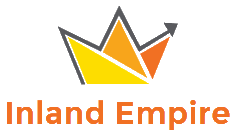The general perception of tax obligation is that, although pricey, it is a required evil when adding to the UK’s economy.
Nonetheless, as unpredictability bordering Brexit runs raging, organisations have actually tightened their belts as well as are now approaching their objective of growth with much more nervousness than used to be the standard.
The federal government has attempted to conquer this increasing fad with the similarity tax obligation alleviation and various other benefits, yet why are organisations not completely capitalising on this?
Caring for your taxes can be an overwhelming job, especially when ironing out the better details like tax obligation alleviation. So, our team of cheap accountants have actually simplified the cost side of things for you, breaking down what expenses are permitted, as well as the ones that aren’t.
Collaborating with the tax obligation system
Comprehending exactly how well the tax obligation system is working for SME as well as mid-market businesses could not be more important, especially as we move towards a post-Brexit economy.
The main agreement the from current research from one of the Big Four firms has concluded is that most of SME and also mid-market organisations are still preparing for growth in 2019– when faced with evident uncertainty– however only a quarter of these organisations see tax obligation as “a key motorist” for this.
There is an aspect of understanding around just how the most effective tax motivations will help with work creation and investment, yet, for the similarity performance, local growth, and also advancement this is not the instance.
Organisations were clear in determining the policies they really felt were the greatest drivers of job creation and also financial investment (such as extra tax obligation alleviation for staff member training, EIS and also SEIS) however were much less clear on linking tax initiatives to certain results that drive advancement, creativity, as well as efficiency.
Absence of understanding
Among the main concerns as to why has actually been determined by the research as the intricacy element.
The report mentioned: “While 94% of companies are forecasting to grow a minimum of 5% for the year ahead, less than a quarter (24%) of businesses see the tax obligation system as a key motorist, highlighting the requirement for even more understanding of tax alleviations and motivations available.”
For the survey, information was gathered from 1,000 SMEs as well as mid-market companies across the nation, each with an annual turnover of a minimum of ₤ 10m.
82% of these companies are privately owned.
Essentially, the research reveals that there are considerable voids where businesses struggle to make use of the tax obligation system to help them reach their objectives and also discover it challenging to link tax obligation initiatives to details results.
87% of these companies claimed that understanding of tax obligation incentives was very important to “some degree” when making organisation choices. However, only 27% declared that they were making full use the different tax benefits available.
The information reveals that services continually feel that there is too much complexity in the system– the right rewards are there but taking advantage of them is not always straightforward for SME as well as mid-market organisations, which are commonly resource constrained.
Requesting simpleness
63% of business who took part in KPMG’s study emphasised that they believed that the simplification of the tax system must be a top priority for the government moving forward.
The information shows that companies continually really feel that there is too much complexity in the system– the best rewards are there yet taking advantage of them is not always simple for SME as well as mid-market companies, which are frequently resource constrained.
Interestingly, when the report segmented services by their development assumptions, it was exposed that there were differing perspectives to be evaluated when contrasting rapid or modest development.
78% of greater development services mentioned that the existing tax obligation system supports development, whereas only 18% of modest growth companies concurred.
Similarly, compared to 27% of companies that claim they are making maximum use the tax system, this rises to 75% within the fastest growing segment, recommending that growth organisations are a lot more engaged with the tax system.
Overall, it appears that primarily through much better involvement and also understanding will the UK be able to drive development from the tax obligation system through to company.
